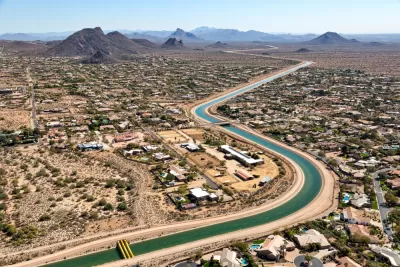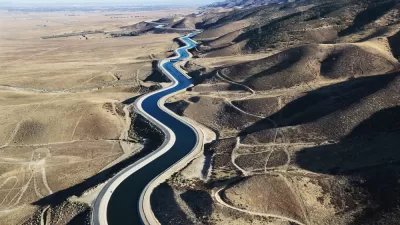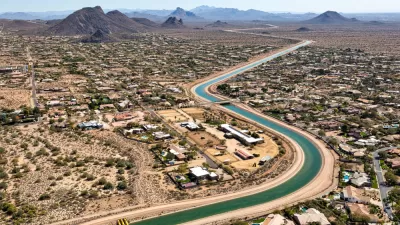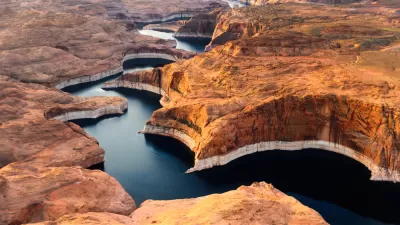The billion-dollar investment in the state's water supplies sounds good on paper, but lawmakers must also distribute funding effectively to mitigate the state's urgent water shortage.

An op-ed by Joanna Allhands argues that Arizona governor Doug Ducey's recent proposal to commit $1 billion to water projects won't be enough to solve the state's water woes. The governor's vague pledge, Allhands writes, leaves many unanswered questions about how the funds will be distributed.
Allhands also suggests that the governor's proposal doesn't bring enough attention to conservation, rather choosing to focus on projects that seek to augment water supplies. "If we only focus on finding new water, it leaves little incentive to use the water we have more wisely – something we could do quicker and, in most cases, at far lower cost."
According to Allhands, many of the more glamorous projects like desalination plants depend on other parties and are years away from completion. Meanwhile, the state could "raid" the general fund and deplete the water funding before it's allocated to specific projects.
Allhands cautions that lawmakers shouldn't forget about the policy side of things, even though those might be more difficult conversations. State leaders must tackle "not only how we sustain the uses that are already here, but also how we grow and where and (importantly) who pays for all of this."
Southwestern states are facing increasingly dire drought conditions. Last summer, when Lake Mead reached historic lows not seen since the reservoir's construction, the federal government declared a water shortage and implemented cutbacks for farmers and water agencies across the region.
FULL STORY: How many of Arizona's water woes would $1 billion solve? That's the question

Alabama: Trump Terminates Settlements for Black Communities Harmed By Raw Sewage
Trump deemed the landmark civil rights agreement “illegal DEI and environmental justice policy.”

Study: Maui’s Plan to Convert Vacation Rentals to Long-Term Housing Could Cause Nearly $1 Billion Economic Loss
The plan would reduce visitor accommodation by 25% resulting in 1,900 jobs lost.

Why Should We Subsidize Public Transportation?
Many public transit agencies face financial stress due to rising costs, declining fare revenue, and declining subsidies. Transit advocates must provide a strong business case for increasing public transit funding.

Paris Bike Boom Leads to Steep Drop in Air Pollution
The French city’s air quality has improved dramatically in the past 20 years, coinciding with a growth in cycling.

Why Housing Costs More to Build in California Than in Texas
Hard costs like labor and materials combined with ‘soft’ costs such as permitting make building in the San Francisco Bay Area almost three times as costly as in Texas cities.

San Diego County Sees a Rise in Urban Coyotes
San Diego County experiences a rise in urban coyotes, as sightings become prevalent throughout its urban neighbourhoods and surrounding areas.
Urban Design for Planners 1: Software Tools
This six-course series explores essential urban design concepts using open source software and equips planners with the tools they need to participate fully in the urban design process.
Planning for Universal Design
Learn the tools for implementing Universal Design in planning regulations.
Smith Gee Studio
Alamo Area Metropolitan Planning Organization
City of Santa Clarita
Institute for Housing and Urban Development Studies (IHS)
City of Grandview
Harvard GSD Executive Education
Toledo-Lucas County Plan Commissions
Salt Lake City
NYU Wagner Graduate School of Public Service





























